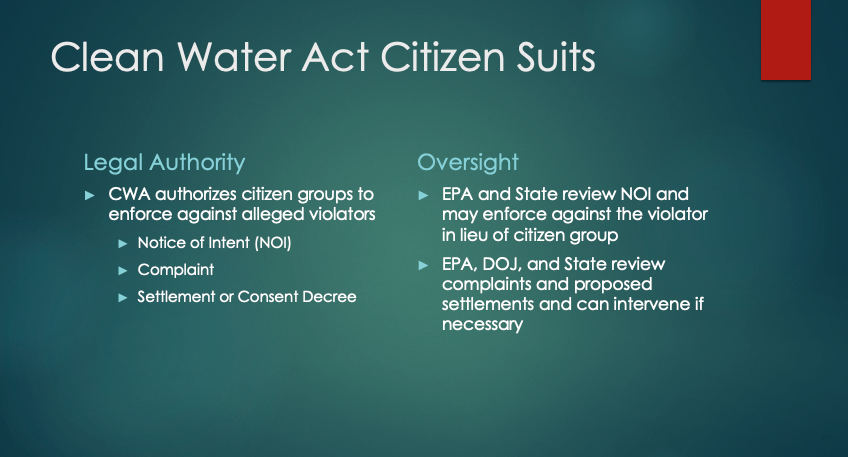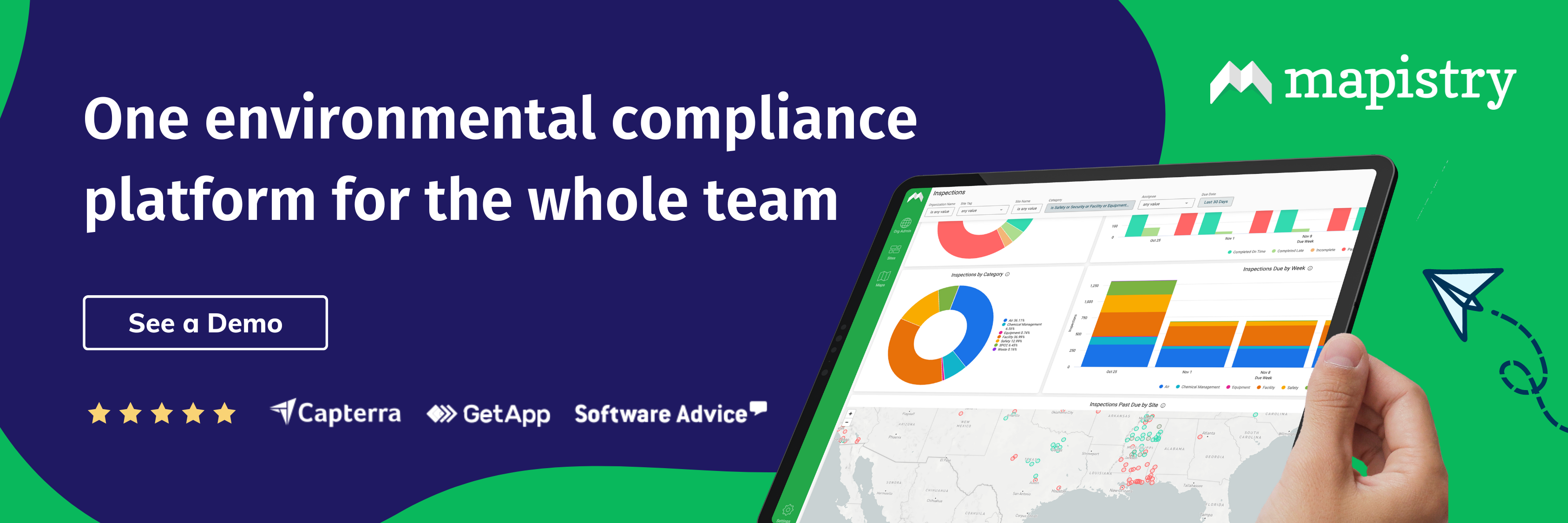California continually leads the way, setting the standards for environmental regulation that follow suit across the nation. This year is no different. We’re seeing a strong focus on water enforcement in 2022 in addition to shifted regulatory priorities with the Biden Administration and more significant efforts by citizen groups to see their communities’ water systems improved.
We chatted with EPA Region 9 leaders on the impacts of EPAs water enforcements in CA and beyond. Here’s what Lawrence Torres (CWA Inspector), Desean Garnett (CWA Attorney), and Sarah Rowan (CWA Attorney) of the California EPA Region 9 had to share that could help you reduce the risk of negative impacts on the communities your facilities are in and avoid hefty fines that impact your bottom line:
Legal Measures:
1) Citizen Suits are becoming common as citizen groups play a more active role in ensuring their communities, especially overburdened communities, are not negatively impacted by facility operations.
There is now a clear pathway for citizens groups and your site operations needs to if a Citizens Suit is issued, here’s what you need to be aware of:
Legal Authority – Citizen groups can issue a notice to the alleged violator on what needs to be corrected. Provided to both the EPA and violator, so the EPA can also look into and attempt to rectify
-
-
- After 60 days, the Citizens Group can file a complaint with the federal district court
- Settlement Consent Decree is the ‘final’ step for outlining what needs to be done
- 45 days for the EPA, state, federal to review and provide comments Normally results in an agreed action plan and monetary payout to the Citizens Group
-

Takeaway Tip : Ensure you’re playing a positive role in the communities you operate. By not actively monitoring, planning, and adjusting your facility efforts, you risk negatively hurting the community, relationships with the community (that your workers live in), and facing hefty financial impacts.
Take your SWPPP digital . Having clear access to all site records, compliance measures, and corrective actions gives you confidence and data to ensure you’re doing what you can to protect your community. And when your inspector comes by, you’ll be able to focus your time assessing any potential issues and clearing up concerns without the frustration of digging through outdated SWPPP reports or missing permit-specific requirements.
2) The Environmental Justice MOU (Memorandum of Understanding) signed by the EPA Region 9 and Cal EPA is the first of its kind.
This MOU expands on the efforts of the current administration’s all-in approach to environmental justice. With overburdened communities already having a lot of industrial facilities, the EPA Region 9 and CAl EPA will share or jointly develop metrics for determining pollution burdens and vulnerability. If your facility is located in an overburdened community, there are heightened inspections to ensure compliance with the Clean Water Act. Takeaway Tip: With more substantial alignment and partnerships with the agencies inspecting and overseeing enforcement of SWPPP, audit your processes and be certain you’re proactively planning and correcting issues. Automate data entry and notifications to get instant alerts if warning signs are detected/exceeded.
3) Instruments for Resolution reflect the legal process facilities can enter into following an EPA inspection.
Within 30 days of an EPA inspection, your facility receives a report of the key observations and has a chance to respond and take the appropriate corrective actions. Once this report is finalized, the EPA will make a compliance determination which can lead to an Administrative Order on Consent or a Unilateral Administrative Order – the latter could lead to a Judicial referral when the EPA cannot help or solve the issue so is forced to refer it to higher legal action.
Undoubtedly, however, “after all corrective actions are satisfied,” most of the time a Consent Decree and Final Order will be assessed once compliance is met. This order includes all final administrative penalties. There is a $23,989 fine assessed per violation. For this fine, it does not matter if you’re assessed a Class 1 or Class 2 penalty. However, for Class 2 you are fined $23,989 per day for each day during which the violation continues. Class 1 or 2 is determined based on the severity of the violation. The maximum penalty for a Class 1 violation is $59,973. The maximum penalty for Class 2 is $299,857. Takeaway Tip: You cannot afford not to be proactive.
Going digital streamlines the process. Even if there’s a violation, if you have documentation that your team has been working through corrective actions and is actively following a set plan, you’ll be able to avoid many of these costly consequences.
EPA Inspection Need to Knows:
SWPPP needs to be specific to your site/facility.
The SWPPP needs to be a living document specific to your facility. EPA Inspectors are looking to see that thought was put into the document and that the site is actively looking at problems, finding solutions, and making an effort to limit pollutants.
BMPS need to be specific.
When going through the observation portion of the inspection, the inspector should be fully prepared for what to expect after reviewing the SWPPP. They’re looking to see that the BMP is installed correctly and is specific to the pollutant at that facility. The special requirements for plastic materials have added BMP requirements per Section XVIII of the Industrial General Permit. This level of regulation for plastics is not expected to slow down!
Records
Ensure you’re providing specific training on stormwater issues to your site – not mass/general training. And ensure it is included in the training records indicating the topic and participants.
‘Join the stronger half’ More than 50% of inspected facilities in Region 9 have an incomplete SWPPP, no SWPPP on-site, or can’t locate it.

Resource link: https://www.law.cornell.edu/uscode/text/33/1319; 33 U.S.C. 1319(g)(2)(A)
